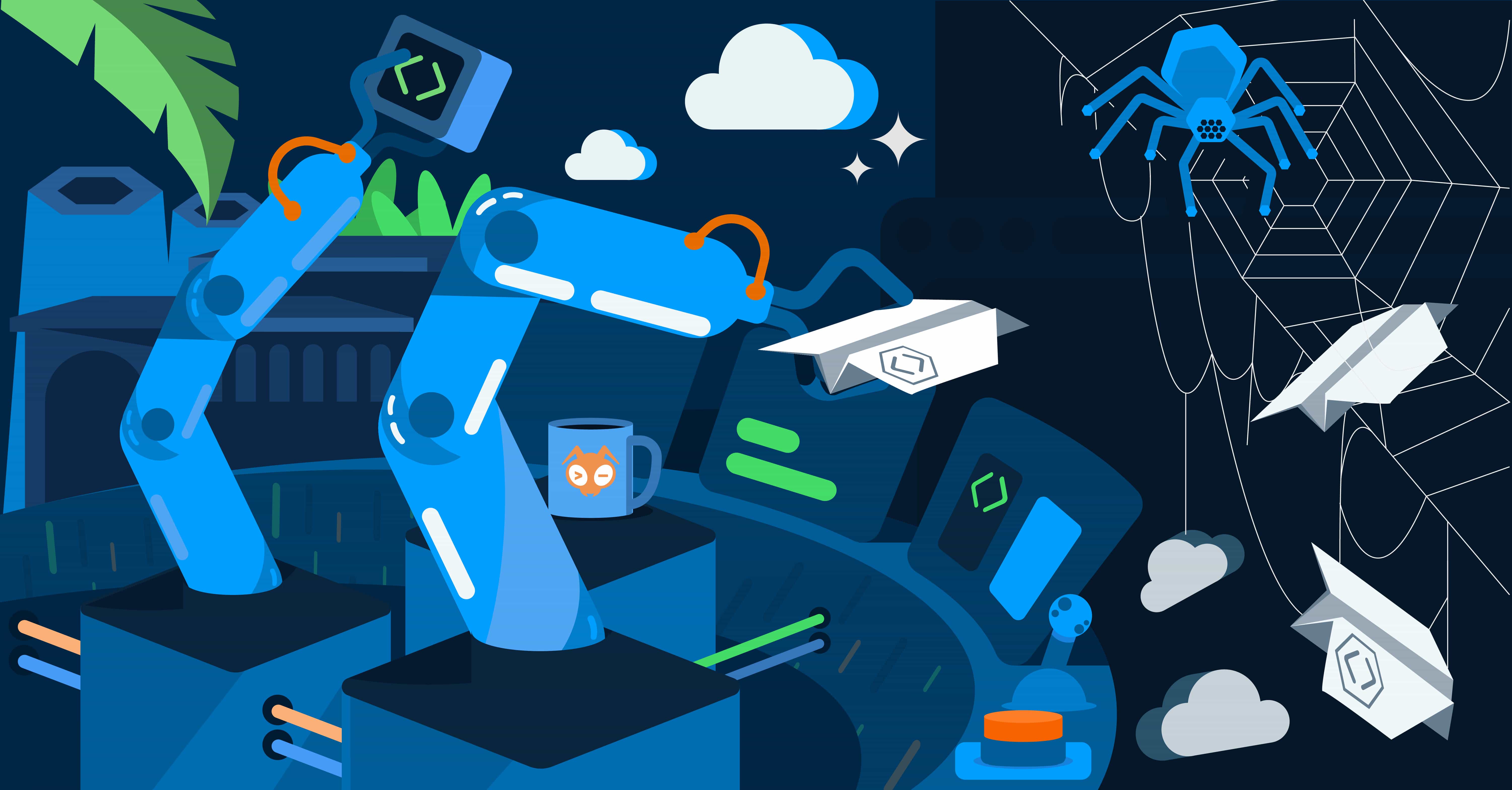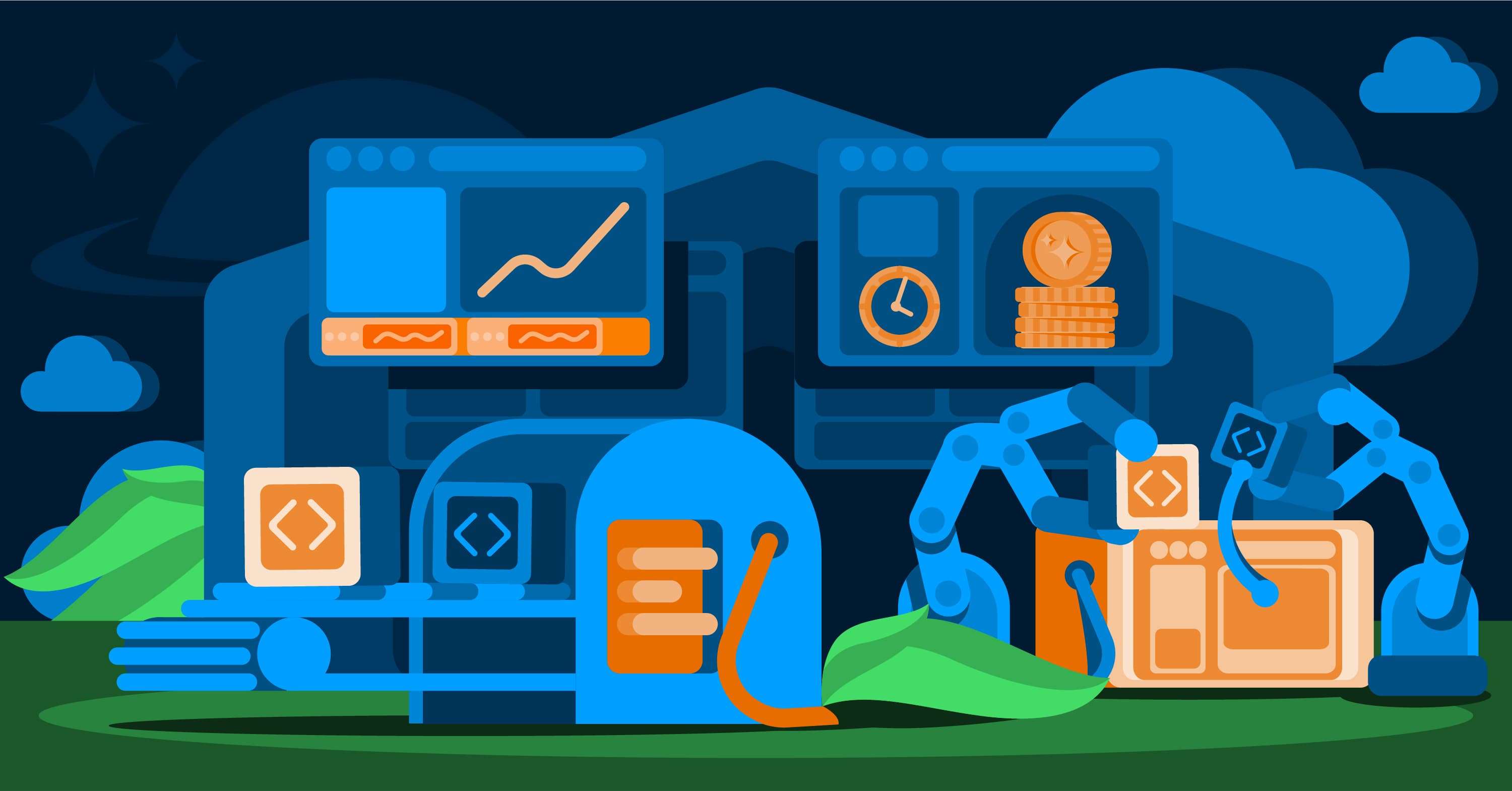Industrial IoT (IIoT) for Manufacturing: Answer Hub
Introduction
Industrial IoT (IIoT) is transforming manufacturing — connecting machines, sensors, and data systems to create smarter, more resilient factories. At Giant Swarm, we help industrial enterprises make these transformations Kubernetes-native, secure, and scalable, so they can focus on building efficiency and resilience without adding complexity.
Key takeaways
Industrial IoT (IIoT) connects machines, sensors, and systems so manufacturers can see what’s happening in real time, spot patterns, predict issues before they happen, and automate routine work. The result is a smarter factory that’s more efficient, flexible, and resilient — and one that creates space for new business models and a stronger competitive advantage.
Who is this for?
This page is for the people making the big calls in manufacturing — the ones responsible for keeping factories efficient, reliable, and future-ready. It’s especially relevant if you are a:
- Chief Operations Officer (COO) looking to increase efficiency and reduce downtime
- Chief Digital Officer (CDO) or Vice President of Digital Transformation leading smart factory initiatives
- Director of Manufacturing focused on scaling production without adding complexity
- Director of Industrial Automation responsible for connecting systems, machines, and data
- Smart Factory Program Lead rolling out IIoT across multiple sites
If your role involves digital transformation, factory efficiency, or scaling IIoT, you’re in the right place.
Why it matters?
Manufacturers are being asked to do more with less — more output, faster turnaround, less disruption, fewer resources. Add sustainability targets and supply chain volatility, and the pressure on operations is immense.
IIoT provides the foundation for smarter factories, by connecting devices and systems for greater visibility, faster decision-making, and automation.
IIoT enables:
- Real-time monitoring and alerts
- Predictive maintenance
- Automation of manual tasks
- New business models (e.g. equipment-as-a-service)
Smart factories deliver measurable gains in uptime, quality, efficiency, and sustainability — all built on resilient, scalable infrastructure.
How Giant Swarm approaches IIoT
At Giant Swarm, we enable manufacturers to scale IIoT initiatives with confidence. Our approach focuses on:
- Cloud native foundations: Built on Kubernetes and container orchestration, so workloads run consistently across edge, on-premises, and cloud.
- Automation-first operations: Using GitOps and declarative deployments to cut manual overhead and keep systems reliable.
- Hybrid flexibility: Supporting both fast, local factory-edge processing and centralized cloud analytics for big-picture insights.
- Multi-cluster management: Delivering governance and resilience across distributed factory environments.
- Partnership mindset: We don’t just hand over a platform — we work alongside your teams to accelerate adoption and reduce risk.
FAQs
How does Industrial IoT support digital transformation in manufacturing?
IIoT connects machines, sensors, and data systems, creating smart factories with real-time visibility, predictive insights, and automation. This aligns day-to-day operations with bigger digital transformation strategies. Read more on lessons from real-world smart factories.
How does Industrial IoT help companies save money or improve performance?
IIoT helps reduce downtime, improve product quality, and speed up decision-making. At scale, it also enables new business models like predictive maintenance and equipment-as-a-service.
How will a smart factory strategy improve operational efficiency and profitability?
By combining connected assets, analytics, and automation, factories can optimize energy use, streamline processes, and reduce costly disruptions. A phased rollout reduces risk and speeds up ROI.
What are some real-world smart factory deployments?
The most successful ones start with clear business goals, IT/OT collaboration, and phased adoption. Challenges often include governance, change management, and scaling across sites. Explore more in our guide on unlocking smart factory success.
What’s the best way to design Industrial IoT systems so they scale?
Flexible architectures, hybrid infrastructure, and automation are key. Containerized workloads and open standards keep systems future-proof.
How does GitOps or automation-driven deployment simplify Industrial IoT environments?
GitOps lets teams manage everything declaratively, making deployments repeatable, consistent, and auditable. See how GitOps supports hybrid factories.
How can hybrid cloud help manage data and operations more effectively across different factories?
Hybrid models combine fast, local edge processing with centralized cloud analytics. This balance improves both operational efficiency and strategic scalability. See how Azure Arc integration helps.
How can organizations unify IT and OT systems through Industrial IoT?
The key is interoperability: standardized APIs, governance, and platforms that bridge IT and OT. Unification improves collaboration, security, and visibility across production and enterprise systems.
Why is Kubernetes or container orchestration important to Industrial IoT?
Kubernetes ensures applications run reliably across edge, on-prem, and cloud environments. It adds resilience, automation, and easier scaling for industrial workloads.
How can Industrial IoT strengthen operational reliability in hybrid environments?
Standardized deployments and observability help organizations detect anomalies early, monitor performance, and apply patches consistently across sites.
How does Industrial IoT minimize downtime and increase resilience?
Predictive analytics, automated failover, and distributed architectures reduce the risk of unplanned downtime and keep production running.
How does multi-cluster management support distributed manufacturing operations?
Multi-cluster strategies let each factory operate independently while still being governed centrally. This provides local control with enterprise-wide resilience.
What are the top cybersecurity risks in Industrial IoT?
Big risks include unauthorized OT access, insecure legacy equipment, and configuration drift. Mitigation requires a zero-trust approach, strong encryption, and continuous monitoring.
Closing thoughts
Industrial IoT has massive potential — but it only delivers if the technology is reliable, scalable, and secure. That’s where Giant Swarm comes in. We run Kubernetes for leading manufacturers, making sure their IIoT platforms are stable, automated, and ready to scale.
Talk to our team or explore our Industrial IoT solutions to see how we can support your smart factory journey.
Related media:
From Our Blog
Stay up to date with what is new in our industry, learn more about the upcoming products and events.

What works in Industrial IoT: lessons from real-world smart factories

Seamless Industrial IoT management: Azure Arc integration for hybrid environments
